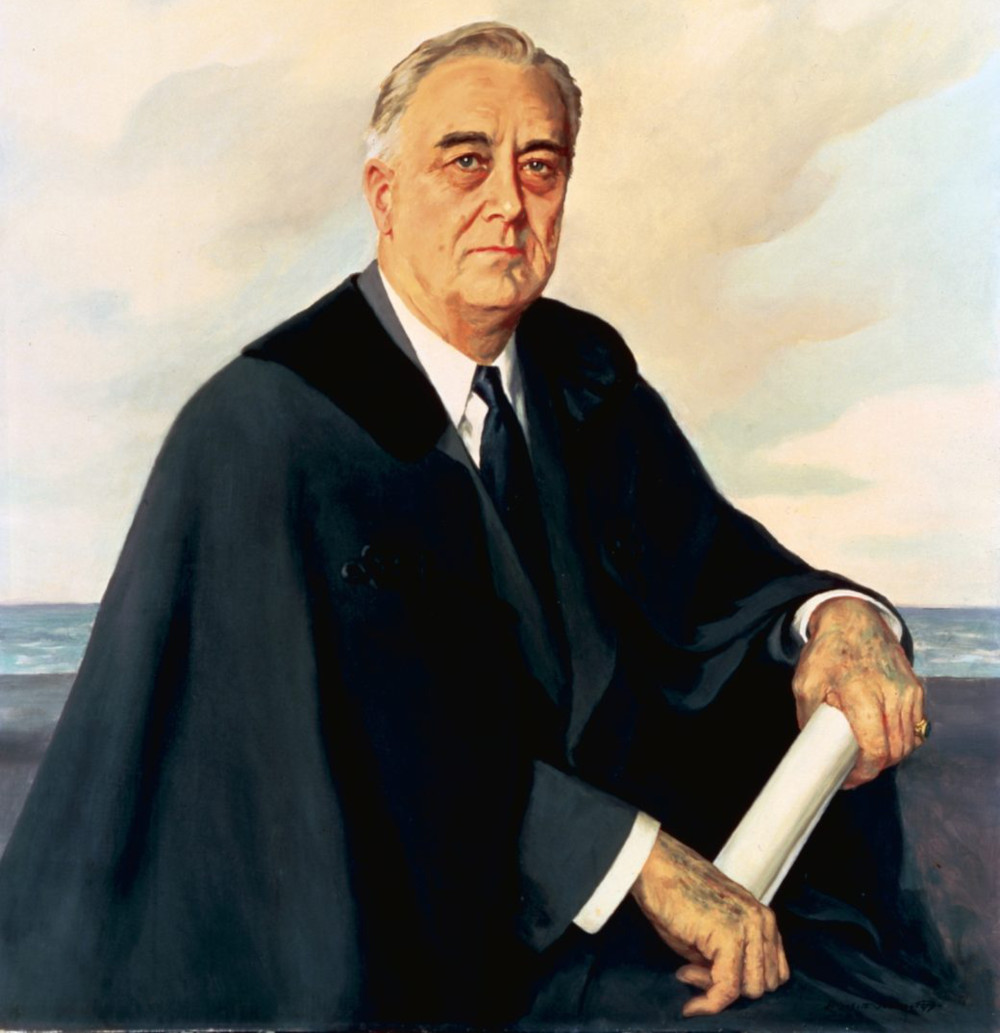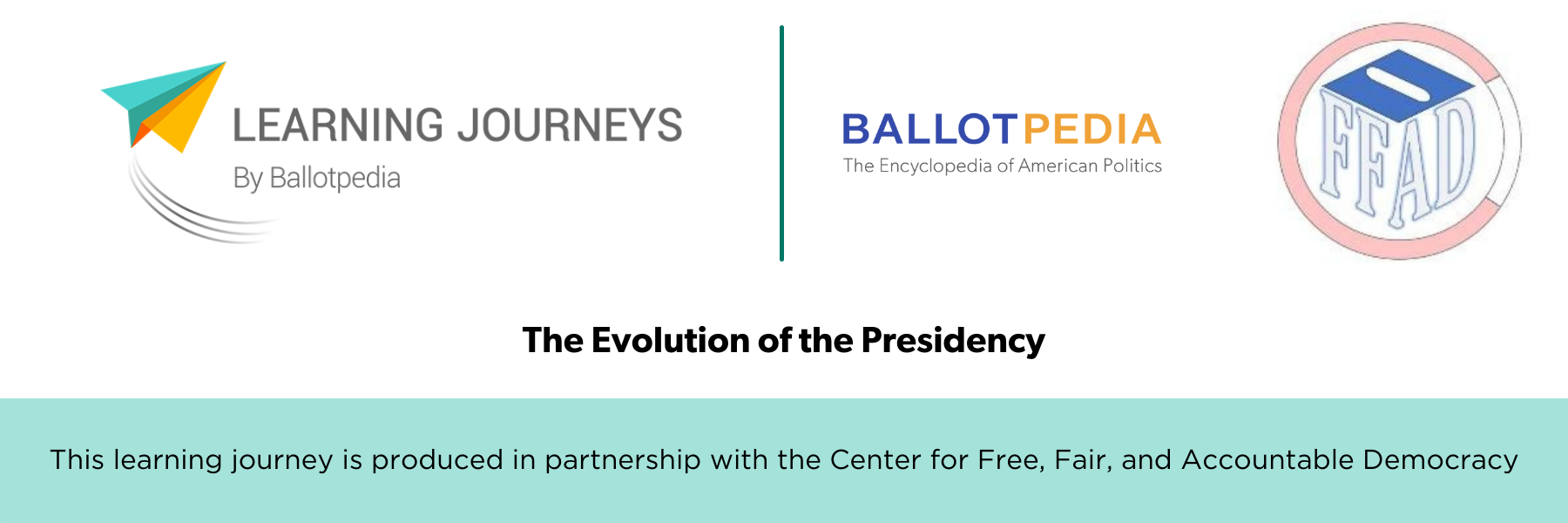|
|
The Evolution of the Presidency: Voters, the President, and the Expanded Role of Political Parties
|
|
|
Welcome to the first of six installments of Ballotpedia and CFFAD’s Learning Journey on the Evolution of the Presidency!
The selection, responsibilities, and powers of the executive branch have changed over the more than two and a half centuries since America’s founding. This Learning Journey will guide you through how the selection process for the president has changed over time, the arguments for and against politicizing the Presidency, and how the president’s powers have evolved over time.
Today, we will begin by reviewing how the process for electing a president has changed since the founding.
Let’s get started!
The Role of Citizens in the Presidential Election
Citizens originally had no role in choosing presidents. Presidents were to be elected by an Electoral College. The College was the framers’ attempt to limit the opportunities for partisan or populist behavior while also keeping the presidency largely independent of Congress. However, by 1828 all but two states had adopted rules requiring that the electors they sent to the Electoral College must vote in accordance with the popular vote in their state. Many citizens thought this outcome was more democratic, but it was a major departure from the framers’ intended use of the Electoral College to insulate the presidency from partisan and populist politics.
Not all citizens could vote. In the early days of the Republic, state legislatures limited voting rights to men who paid taxes or held property. Men without property, enslaved people, indigenous people, Asian-Americans, Catholics (in some states), Jewish people (in some states), and women were excluded.
Giving some citizens a role in electing presidents made presidents accountable to voters. Before 1828, presidents were primarily accountable to the legislators in each state government that chose and instructed their representatives in the Electoral College. After 1828, presidential candidates and sitting presidents seeking re-election needed to woo as many voters as possible.
Giving citizens a role in electing presidents also gave presidents a political power base. Under the original intentions of the framers, presidential power was essentially technocratic, based on Electoral College perceptions of merit and the specific authorities conferred by the Constitution. From 1828 onward, however, presidents could claim substantial political backing in the form of the voters who elected them. This change allowed presidents to assert themselves against both Congress and other political leaders. Presidents can use their voter base to become national leaders and agenda-setters, either holding themselves up as representing a mandate from the people or by mobilizing them for or against various Congressional policies.
Term Limits
The twenty-second amendment adopted in 1947 limited each president to a maximum of two terms in office. This was done out of fear that a president could use their time in office to entrench themselves to the disadvantage of competitors or Congress itself. The Amendment was passed shortly after the Presidency of Franklin Delano Roosevelt, who was elected to four terms in office.
Franklin Delano Roosevelt (FDR)

Term limits protect against entrenchment, but they also deny us the opportunity to reward or hold accountable a second-term president. Second-term presidents have legitimacy, having been elected, but no accountability to voters after the election that returned them to office. The lack of accountability reduces the incentive for a second-term president to be concerned with the voters. Even so, second-term presidents remain subject to the Constitution and therefore remain accountable to Congress and the federal courts. In addition, legislators in the president’s party will want the president to avoid policies that will hurt their chances for re-election.
Read On:
What's Next?
Since 1828, voters have had a voice in the selection of the president. As the influence of voters increased and the franchise expanded, political parties’ influence and relationship with the president has become an important part of American politics. Tomorrow, we’ll explore some of the effects that partisanship has had on the Presidency.
Go Deeper:
|
|
|
|
|
|

